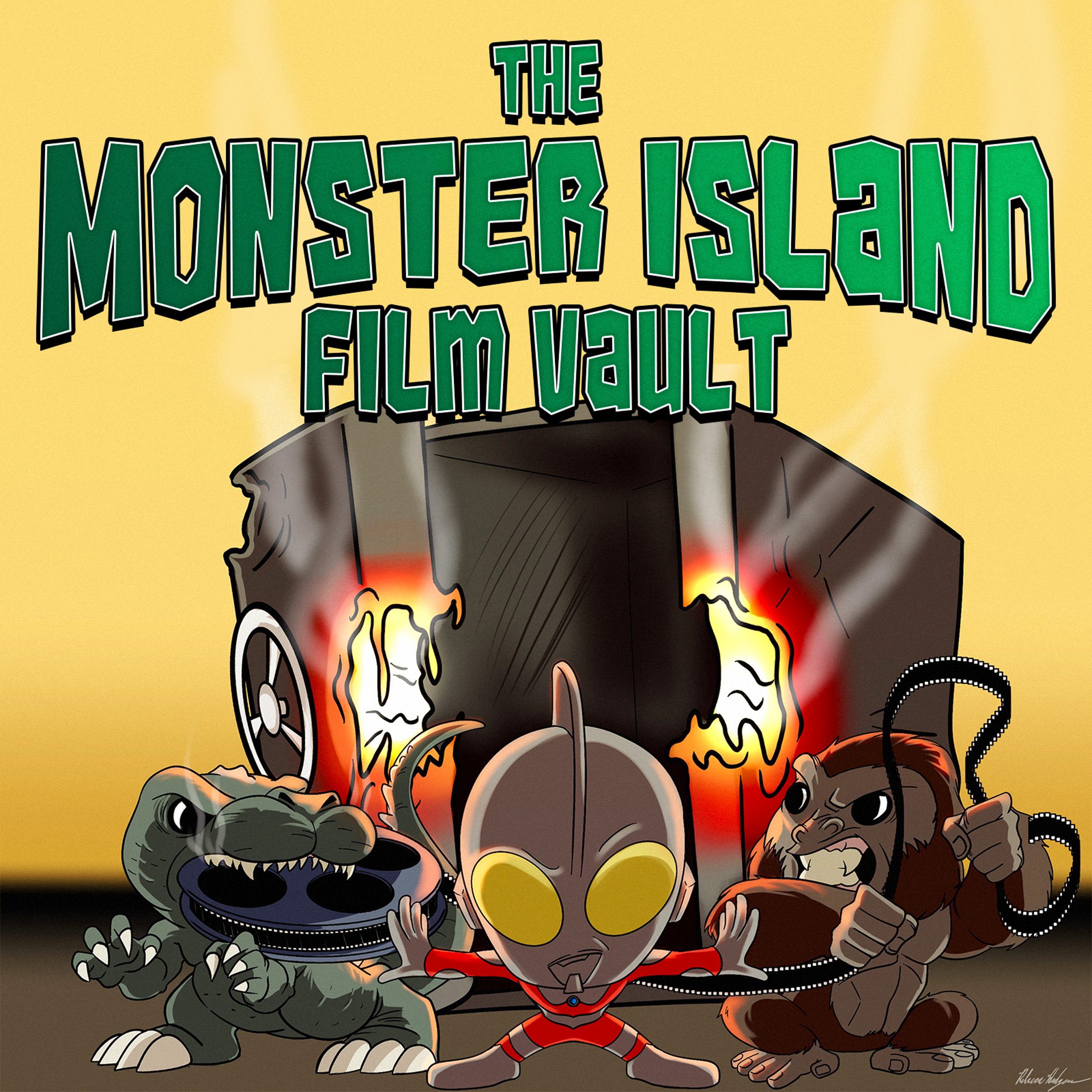
Hello, kaiju lovers!
Despite a slight delay thanks to MIFV mascots Goji-kun and Bro Kong hiding Nathan’s laptop, the unavoidable has happened: King Kong Lives. John LeMay, author of Kong Unmade and other kaiju books, returns to Monster Island to discuss the Godzilla vs. Megalon of the Kong series—and John un-ironically likes it! This ill-fated sequel to Dino de Laurentiis’s 1976 remake stars Linda Hamilton, fresh off of her star-making role in The Terminator, as a scientist who resurrects King Kong with an artificial heart…because that cures falling off of a building. Not only that, he “falls in love” with Lady Kong, a female giant gorilla, which leads to most of the Kong film tropes getting turned on their ears. Also, King Kong eats rednecks. Yep. Nathan goes full-tilt MST3K with this movie, but he riffs because he loves. That is, when he isn’t mediating a conflict between John and the show’s intrepid producer, Jimmy From NASA. The Toku Topic is the convoluted King Kong copyright, which came to a head twice when Universal tried to sue Dino de Laurentiis in the 1970s and Nintendo in the early 1980s. Hear all about it in the newest episode of The Monster Island Film Vault!

You can buy the hardcover of John’s book Kong Unmade on Amazon.
Check out Jimmy’s Notes on this episode!
Timestamps:
Intro: 0:00-3:28
Entertaining Info Dump: 3:28-9:29
Toku Talk: 9:29-1:04:18
Toku Topic: 1:04:18-1:31:04
Outro: 1:31:04-end
© 2020 Moonlighting Ninjas Media
Bibliography/Further Reading:
- “Everything You Need to Know About Trademark Law” (Polaris Law Firm)
- “Historical Hypocrisy: Donkey Kong, King Kong, & The Public Domain” by Timothy Geigner (TechDirt)
- King Kong: The History of a Movie Icon from Fay Wray to Peter Jackson by Ray Morton
- “King Kong Lives (1986) Review – Kong-A-Thon Episode 6” (YouTube)
- Kong Unmade: The Lost Films of Skull Island by John LeMay
- “Laws that choke creativity | Larry Lessig.” (YouTube, uploaded by TED)
- Living Dangerously: The Adventures of Merian C. Cooper, Creator of King Kong by Mark Cotta Vaz
- Remix: Making Art and Commerce Thrive in the Hybrid Economy by Larry Lessig
- “The true story behind Universal suing Nintendo over King Kong and Donkey Kong” by Luke Owen (Flickering Myth)
- “Understanding copyright law” by Jennifer Horner (ASHA Wire, The ASHA Leader)
- “Welcome to the Public Domain” by Rich Stim (Stanford University Libraries)
- “What is Fair Use?” by Rich Stim (Stanford University Libraries)
- Wiki Articles for King Kong Lives (1976):
–Wikipedia
–IMDB
–Wikizilla
–Gojipedia
Podcast: Play in new window | Download
Subscribe: RSS
Comments closed






